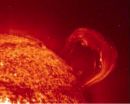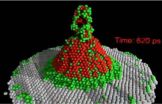(Press-News.org) Health Canada's cancellation of plans to renew tobacco warning labels on cigarette packages may lead to increased smoking rates and smoking-related illnesses and deaths, states an editorial in CMAJ (Canadian Medical Association Journal) (pre-embargo link only) http://www.cmaj.ca/embargo/cmaj101583.pdf.
Ten years ago, Canada was a leader in warning labels and other effective tobacco policies. Abandoning this labeling policy may be a set back for efforts in Canada, particularly as labels are now the government's only remaining mass communication initiative warning of the dangers of smoking.
"Warning labels are an effective, inexpensive communication strategy," writes Dr. Matthew Stanbrook, a respirologist and CMAJ deputy editor with Editor-in-Chief Dr. Paul Hébert. "The "dose" of information increases automatically in proportion to the amount of tobacco consumed: the more often smokers reach for a cigarette, the more often they see and are influenced by the warnings."
Warning labels also deter non-smokers from taking up smoking and can be viewed by children and youth as well as adults.
The international Framework Convention on Tobacco Control recommends large pictorial warning labels and Canada was the first country to adopt labeling regulations in compliance with these guidelines with positive results. "Knowledge of specific health consequences of smoking is twice as high among Canadian smokers compared to their counterparts in the US and UK, where warning labels do not meet the guidelines," write the authors.
However, warning labels need to be refreshed to be effective as they lose impact over time and with repeated exposure. Countries such as Thailand and Uruguay have updated their labels several times in the last five years based on this evidence whereas Health Canada has not changed a single label over the same period in this country.
"The federal Minister of Health has previously shown leadership in getting tobacco control legislation passed through Parliament. Her leadership is needed again," they conclude.
### END
Do not abandon new cigarette warning labels
Editorial
2010-11-09
ELSE PRESS RELEASES FROM THIS DATE:
Differences in human and Neanderthal brains set in just after birth
2010-11-09
The findings are based on comparisons of virtual imprints of the developing brain and surrounding structures (known as endocasts) derived from the skulls of modern and fossilized humans, including that of a newborn Neanderthal.
Philipp Gunz of the Max Planck Institute for Evolutionary Anthropology explained that the differences researchers observe in early brain development likely reflect changes in the underlying brain circuitry. It is that internal organization of the brain that matters most for cognitive ability.
"In modern humans, the connections between diverse ...
Fusion makes major step forward at MIT through studies of the plasma edge
2010-11-09
###
These new findings will be presented in three invited talks at the American Physical Society, Division of Plasma Physics 52nd annual meeting on November 8-12 in Chicago. END ...
Getting to know the sun advances fusion research
2010-11-09
Researchers at the Princeton Plasma Physics Laboratory have successfully used Coaxial Helicity Injection (CHI) to generate plasma current and couple it to a conventional current generation method at the National Spherical Torus Experiment (NSTX) fusion experiment. After coupling, the combined process generated 1 million amperes of current using 40 percent less energy than needed to generate this current using the conventional means by itself, thus demonstrating that a high-quality initial magnetic configuration was produced by CHI.
Plasma confinement devices based on ...
Imaging of Alfvén waves and fast ions in a fusion plasma
2010-11-09
Fusion plasmas in the laboratory typically reach 100 million degrees. These high temperatures are required to ignite the hydrogen plasma and maintain the fusion burn by the production of high-energy alpha particles. One challenge for a fusion reactor is how to contain the alpha particles in the vessel long enough for the particles to efficiently heat the hydrogen plasma. One way that these alpha particles can escape the fusion chamber prematurely is by exciting high frequency Alfvén waves and riding these waves to the vessel walls, like a surfer rides a wave to the beach.
While ...
The many faces of the shear Alfvén wave
2010-11-09
When physicists probe the mysteries of plasma, the fourth state of matter, they often discover phenomena of striking beauty. Much as when the Hubble Space Telescope sent back vivid images from space of ionized gas clouds (an interstellar plasma!), new 3D images of shear Alfvén waves are delighting both scientists and a new generation of science enthusiasts.
Plasmas support a large variety of waves. Some of these are familiar, such as light and sound waves, but a great many exist nowhere else. One of the fundamental waves in magnetized plasma is the shear Alfvén wave, ...
Plasma as a fast optical switch
2010-11-09
Just like an electrical switch allows the flow of electricity into electrical circuits, relativistic transparency in plasma can act like a fast optical switch allowing the flow of light through otherwise opaque plasma. Modern day lasers, such as the Trident laser in Los Alamos National Laboratory delivers a 200 terawatt power pulse (roughly 400 times the average electrical consumption of the United States) in half a trillionth of a second (picosecond) time. As shown in Fig. 1, when the laser power reaches a threshold limit, relativistic transparency in plasma turns the ...
Scientists unlock the secrets of exploding plasma clouds on the sun
2010-11-09
The Sun sporadically expels trillions of tons of million-degree hydrogen gas in explosions called coronal mass ejections (CMEs). Such clouds—an example is shown in Figure 1a—are enormous in size (spanning millions of miles) and are made up of magnetized plasma gases, so hot that hydrogen atoms are ionized. CMEs are rapidly accelerated by magnetic forces to speeds of hundreds of kilometers per second to upwards of 2,000 kilometers per second in several tens of minutes. CMEs are closely related to solar flares and, when they impinge on the Earth, can trigger spectacular auroral ...
Taming thermonuclear plasma with a snowflake
2010-11-09
Physicists working on the National Spherical Torus Experiment (NSTX) at the Princeton Plasma Physics Laboratory are now one step closer to solving one of the grand challenges of magnetic fusion research—how to reduce the effect that the hot plasma has on fusion machine walls (or how to tame the plasma-material interface). Some heat from the hot plasma core of a fusion energy device escapes the plasma and can interact with reactor vessel walls. This not only erodes the walls and other components, but also contaminates the plasma—all challenges for practical fusion. One method ...
Vacuum arcs spark new interest
2010-11-09
Whenever two pieces of metal at different voltages are brought near each other, as when an appliance is plugged into a live socket, there is a chance there will be an arc between them. Most of the arcs people see are a breakdown of the gas between the metal surfaces, but this type of breakdown can also occur in a vacuum. This vacuum breakdown, which until recently has not been well understood, has implications for applications from particle accelerators to fusion reactors.
As part of an effort to understand the maximum accelerating field in particle accelerators, scientists ...
PIT(-1)ting good and bad outcomes against each other in breast cancer
2010-11-09
The outlook for patients with breast cancer is determined in part by whether or not their tumor has spread to other sites in the body. A team of researchers, led by Roman Perez-Fernandez and colleagues, at the University of Santiago de Compostela, Spain, has now identified in a subset of patients with breast cancer, a marker associated with the occurrence of tumors at distant sites; a finding that they hope might help predict a patient's outlook more accurately. Specifically, the team found that in patients with breast cancer that was accompanied by the presence of tumor ...
LAST 30 PRESS RELEASES:
A JBNU–KIMS collaborative study on a cost-effective alloy matches superalloys for power plants and energy infrastructure
New study overturns long-held model of how plants coordinate immune responses.
New AI model predicts disease risk while you sleep
Scientists discover molecular ‘reshuffle’ and crack an 80-year-old conundrum
How stressors during pregnancy impact the developing fetal brain
Electrons lag behind the nucleus
From fungi to brain cells: one scientist's winding path reveals how epigenomics shapes neural destiny
Schizophrenia and osteoporosis share 195 genetic loci, highlighting unexpected biological bridges between brain and bone
Schizophrenia-linked genetic variant renders key brain receptor completely unresponsive to both natural and therapeutic compounds
Innovative review reveals overlooked complexity in cellular energy sensor's dual roles in Alzheimer's disease
Autism research reframed: Why heterogeneity is the data, not the noise
Brazil's genetic treasure trove: supercentenarians reveal secrets of extreme human longevity
The (metabolic) cost of life
CFRI special issue call for papers: New Frontiers in Sustainable Finance
HKU Engineering scholar demonstrates the smallest all-printed infrared photodetectors to date
Precision empowerment for brain "eavesdropping": CAS team develops triple-electrode integrated functional electrode for simultaneous monitoring of neural signals and chemical transmitters during sleep
Single-capillary endothelial dysfunction resolved by optoacoustic mesoscopy
HKU three research projects named among ‘Top 10 Innovation & Technology News in Hong Kong 2025’ showcasing excellence in research and technology transfer
NLRSeek: A reannotation-based pipeline for mining missing NLR genes in sequenced genomes
A strand and whole genome duplication–aware collinear gene identification tool
Light storage in light cages: A revolutionary approach to on-chip quantum memories
Point spread function decoupling in computational fluorescence microscopy
BacPhase: Long-insert paired-end sequencing for bin marker construction and genome phasing
GmWOX1 regulates the mediolateral polarity of compound leaves in soybean
ChargeFabrica: An open-source simulation tool that aims to accelerate search for high performance perovskite solar cells
High levels of ADAR overexpression induce abundant and stochastic off-target RNA editing in rice protoplasts
On-demand upgraded recycling of polyethylene and construction of sustainable multifunctional materials based on the "LEGO" strategy
New "Stomata in-sight" system allows scientists to watch plants breathe in real-time
Anorexia nervosa may result in long-term skeletal muscle impairment
Narrative-based performance reviews deemed fairest by employees
[Press-News.org] Do not abandon new cigarette warning labelsEditorial



